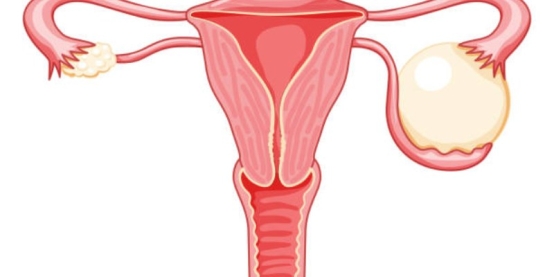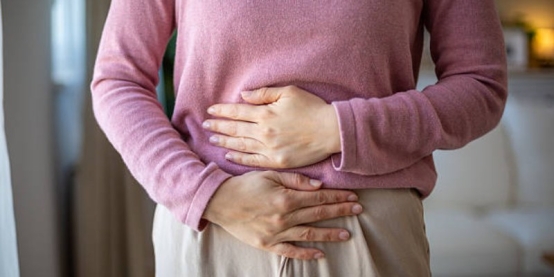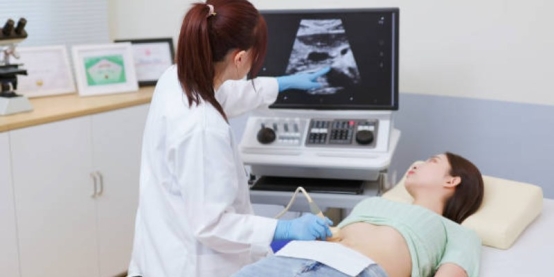What Every Woman Should Know About Ovarian Cysts
Ovarian cysts are a health condition many women know of but know little about. These fluid-filled sac-like structures typically develop unobtrusively in the ovaries, sometimes even disappearing without incident. Other times, they can be painful, swollen, or even life-threatening. Knowing the symptoms, causes, and cures can be a lifesaver for women's reproductive health.
What Are Ovarian Cysts?
An ovarian cyst is a liquid-filled sac that develops on or inside an ovary. Ovaries are tiny, almond-shaped organs in the female reproductive system that make eggs and hormones.

There are two broad types:
Functional cysts – These are the most common and appear during ovulation. They usually resolve spontaneously.
Pathological cysts – These develop as a result of abnormal cell growth and can require medical attention.
Ovarian cysts are a common occurrence in childbearing-age women, and most will never even know they had one.
Types of Ovarian Cysts
Not all ovarian cysts are equal. Knowing the different types assists in determining which are benign and require more investigation.
Functional Cysts
Follicular cysts – Form when an egg is not released at the time of ovulation.
Corpus luteum cysts – Form when the follicle closes after the release of an egg and fluid collects.
Dermoid Cysts (Teratomas)
Contain tissue like hair, fat, or skin and may have to be removed if large.
Endometriomas
Caused by endometriosis, they form when tissue similar to the lining of the uterus grows on the ovaries.
Cystadenomas
These contain watery or mucous substances, can grow large, but are usually benign.
Polycystic Ovaries
Unlike a single ovarian cyst, this condition is linked to polycystic ovary syndrome (PCOS) and can affect fertility and hormones.
Most functional cysts are harmless, but complex cysts such as dermoid cysts and endometriomas may need to be treated.
Causes and Risk Factors
Multiple factors cause ovarian cysts to develop:
Hormonal changes – Irregular cycles of ovulation increase the incidence of cyst development.
Pregnancy – Cysts can develop to support early pregnancy.
Endometriosis – Causes endometriomas, which can be painful.
Pelvic infections – Severe infections can spread to the ovaries.
Family history and genetics – Risk is higher if close family members have had them.
Lifestyle factors – Obesity, high Stress, and irregular regulation of hormones might be involved.
Symptoms of Ovarian Cysts
Most ovarian cysts do not have symptoms and will spontaneously resolve. When symptoms do occur, they may include:
Pelvic pressure or pain
Abdominal bloating or swelling
Heavy or painful menstrual periods or irregular periods
Painful sex
Frequent urination or inability to fully empty the bladder
Nausea or breast tenderness
Severe symptoms, including sudden, sharp pelvic pain, dizziness, or fever, may indicate complications.

How Are Ovarian Cysts Diagnosed?
Doctors use many different techniques to diagnose ovarian cysts:
Pelvic exam – Can identify swelling or abnormal growths.
Ultrasound – Most common method to confirm cyst size, type, and location.
Blood tests – Markers like CA-125 help rule out ovarian cancer in high-risk cases.
Laparoscopy – Minor surgery to examine cysts personally.
Possible Complications
Although the majority of ovarian cysts are benign, there is a chance for complications to develop:
Ovarian torsion – A huge cyst can turn the ovary, cutting off the blood supply and causing acute, intense pain.
Ruptured cyst – Can lead to internal bleeding and stabbing pelvic pain.
Fertility problems – Cysts associated with endometriomas and PCOS can impact egg quality.
Cancer risk – Very infrequent, but certain cysts can become malignant growths, particularly after menopause.
Treatment Options
Treatment depends on the nature, size, and symptoms:
Watchful waiting – Small, normal cysts tend to heal on their own.
Medications – Hormonal birth control can be used to treat ovulation to reduce new formation.
Surgery –
Laparoscopy – Minimal surgical removal of small cysts.
Laparotomy – Used for large, complicated cysts.
Lifestyle and Self-Care Tips
Women can take measures to manage symptoms and reduce cyst discomfort:
Use heat or over-the-counter medication for mild pain.
Keep track of menstrual cycles and report unusual symptoms.
Consume a balanced diet with fruits, vegetables, and lean protein.
Stay active with daily exercise to keep hormones balanced.
Engage in Stress reduction methods like meditation or Yoga.
Natural remedies may help relieve discomfort, but are not a substitute for medical attention when intense symptoms are encountered.
Prevention and Risk Reduction
Prevention is not always feasible with all ovarian cysts, but risk reduction is attainable:
Have regular pelvic exams for early diagnosis.
Monitor menstrual health for irregularities.
Check for conditions like PCOS and endometriosis with a doctor's supervision.
Maintaining a healthy weight will facilitate hormone regulation.
Seek medical attention immediately if experiencing new symptoms.

When to See a Doctor Immediately
Seek immediate medical attention if experiencing:
Suddenly, severe pelvic pain
Abdominal pain with fever
Dizziness, weakness, or fainting
Abnormal vaginal bleeding
Acute distension of the belly
Such symptoms may indicate a ruptured cyst or torsion that requires urgent care.
Living With Ovarian Cysts
It is usually physically as well as emotionally taxing to live with ovarian cysts. In a few, cysts hardly have any impact, while in others, they may affect fertility, pregnancy, or daily comfort.
Emotional support groups can provide reassurance.
Medical treatments and surveillance can manage fertility problems.
Women with recurring cysts may require follow-ups for many years.
Self-care and education make it less complex to live with ovarian cysts.
Ovarian cysts are common, and every woman will experience them at some point. Most are benign, but it is vital to be aware of the symptoms, complications, and cure. Check-ups, a healthy diet, and early medical advice ensure the best outcome. Being well educated, women can control their female health and respond quickly when there are warning signs.